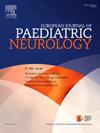青少年癫痫患者的生活质量:一项病例对照研究
IF 2.3
3区 医学
Q3 CLINICAL NEUROLOGY
引用次数: 0
摘要
理由:有癫痫的青少年与无癫痫的青少年的生活质量(QOL)比较数据有限。本研究旨在比较青少年癫痫患者和对照组的自我和照顾者评定的儿童生活质量,并探讨影响青少年癫痫患者生活质量的因素。方法青少年癫痫患者(11 ~ 15岁)(n = 60;25/35名男孩/女孩),一组匹配的对照组(n = 49 25/24;男孩/女孩),他们的主要照顾者完成了儿童生活质量的测量(儿科生活质量量表;PedsQL)。癫痫组与对照组比较采用卡方分析和独立t检验。采用线性回归方法探讨与青少年癫痫患者生活质量相关的因素。p <的α水平;采用0.05。结果青少年癫痫患者的生活质量各域得分、自评PedsQL的总结得分和总分均显著低于青少年癫痫患者(p <;0.001,身体功能除外(p = 0.003))。青少年癫痫患者的照顾者评定的总生活质量也明显较低,所有PedsQL域、总结得分和总分的得分均较低(p <;0.001)。青少年心理健康问题的增加、青少年运动协调困难的增加以及在评估前一周有癫痫发作与青少年和照顾者评定的青少年癫痫患者的生活质量得分降低有关。结论青少年癫痫患者生活质量的自我报告和照顾者报告均低于未患癫痫的同龄人。与心理健康和运动协调困难的关联突出了识别和管理这些共存条件的必要性。重要的是,在癫痫诊所提供识别和管理这些困难的资源,以优化这些青少年的生活质量。本文章由计算机程序翻译,如有差异,请以英文原文为准。
Quality of life in young adolescents with epilepsy: A case control study
Rationale
There is limited data comparing quality of life (QOL) in young adolescents with epilepsy with young adolescents without epilepsy. This study aimed to compare self and caregiver rated child quality of life in young adolescents with epilepsy and a matched control group without epilepsy, and to explore factors associated with quality of life in young adolescents with epilepsy.
Method
Young adolescents with epilepsy (aged between 11 and 15 years) (n = 60; 25/35 boys/girls), a group of matched controls (n = 49 25/24; boys/girls), and their primary caregivers completed a measure of the child's quality of life (Pediatric Quality of Life Inventory; PedsQL). Comparisons between the epilepsy and control group were undertaken using chi-square analysis and independent t-tests. Linear regression was used to explore factors associated with quality of life in the adolescents with epilepsy. An alpha level of p < 0.05 was used.
Results
Adolescents with epilepsy had significantly lower scores on all QoL domains, summary scores and total score of the self-rated PedsQL (all p < 0.001 with exception of physical functioning (p = 0.003)). Adolescents with epilepsy also had significantly lower caregiver rated total QOL with lower scores on all of the PedsQL domains, summary scores, and on the total score (all p < 0.001). Increased adolescent mental health difficulties, increased adolescent motor coordination difficulties, and having had seizures in the week prior to the assessment were associated with reduced quality of life scores on both adolescents and caregiver rated quality of life in the adolescents with epilepsy.
Conclusion
Young adolescents with epilepsy have lower QOL on both self- and caregiver report compared to peers without epilepsy. The association with mental health and motor coordination difficulties highlights the need for identification and management of these co-occurring conditions. It is important that resources for identification and management of these difficulties are available in epilepsy clinics to optimise QoL for these adolescents.
求助全文
通过发布文献求助,成功后即可免费获取论文全文。
去求助
来源期刊
CiteScore
6.30
自引率
3.20%
发文量
115
审稿时长
81 days
期刊介绍:
The European Journal of Paediatric Neurology is the Official Journal of the European Paediatric Neurology Society, successor to the long-established European Federation of Child Neurology Societies.
Under the guidance of a prestigious International editorial board, this multi-disciplinary journal publishes exciting clinical and experimental research in this rapidly expanding field. High quality papers written by leading experts encompass all the major diseases including epilepsy, movement disorders, neuromuscular disorders, neurodegenerative disorders and intellectual disability.
Other exciting highlights include articles on brain imaging and neonatal neurology, and the publication of regularly updated tables relating to the main groups of disorders.

 求助内容:
求助内容: 应助结果提醒方式:
应助结果提醒方式:


